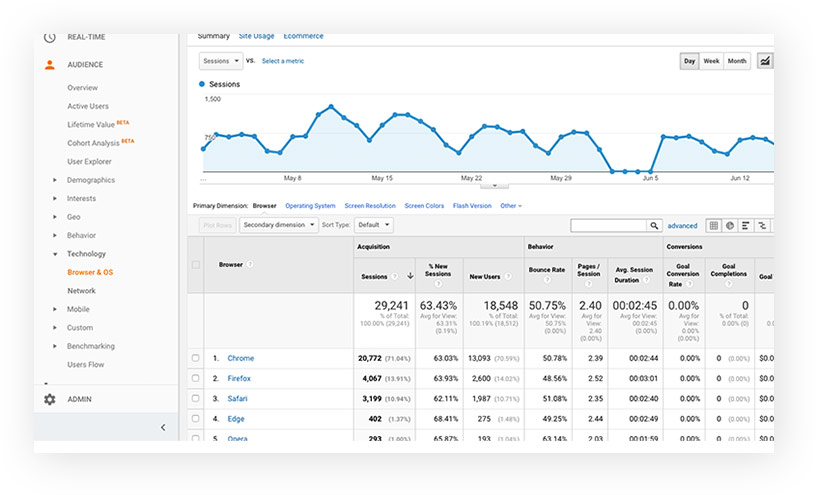
Not all web traffic is good traffic. If you get website visitors that aren’t sure how they reached your page, they won’t be good leads and won’t stick around. You also don’t want visitors to reach your page and then bounce. So how do you determine if your web traffic is good or bad? Google Analytics is a helpful tool to analyze your site! Let’s take a closer look at how this free tool can help your business.
What is Google Analytics?
Google Analytics is a platform that collects data for useful business reports. It’s essentially a tool to track and obtain reports for website traffic, but it doesn’t track rankings. Google Analytics helps you discover how many visitors, how long they stayed on your site, where your customers are located, etc. You can use the information that you gathered about what online behaviors led to purchases in order to reach more customers. For example, if several customers get stuck on a certain step in the purchasing process, a Google Analytics report will include this info so you can make changes to the site to solve the problem.

How to Collect Google Analytics Data?
First, you need to sign up for a Google Analytics account (it’s free). Then, you can place a small piece of Javascript code, also known as a UA code, on your website pages if you want to track data. This tracking code will collect data on your website users. For example, you can track the browser type, device and operating system. You can even see what brought the customer to your site (ad, search engine or marketing email).
All of this data gets packaged and sent off to Google Analytics so you can create reports. You can update the configuration settings to dial in on the data you want to collect. For example, you can exclude traffic from internal company traffic or customers outside of the U.S. One important item to consider is that you don’t want to exclude any data from your configuration settings that you might want later. If you think you might want to look at some of this data in the future, carefully look at your settings for items you’re excluding. You can’t change the setting and have past data appear because Google Analytics wasn’t tracking it.
How to Setup your Google Analytics Account?
Small to medium-sized businesses typically have one Google Analytics account. Within this account, you can have different “properties” that each have different views. For example, perhaps you want sales regions saved as separate “properties.” This way you can zero in and look at your business from a few different Google Analytics angles.
Setting goals is another part of the setup process. These goals are basically business goals or conversion goals from your website. For example, goals can be the number of purchases or number of people who signed up for a coupon. Take time to think about how you’re setting this up because you can’t change data once Google Analytics collects and processes it.
Finally, you’ll also want to look at who has access to your Google Analytics data (user permissions). There are different levels of permissions from “Admin” to “Read and Analyze.” For example, the “Edit” profile can change configuration settings.

How much does Google Analytics cost?
You need to sign up for a Google Analytics account to use the reporting, but most of the tools are free. There are a few advanced features that do cost money. If you have a small to medium-sized business, the free tools are likely fine. If you have a large business, then you can look into the more advanced tools that come at a price.
Want more info?
Google Analytic Academy provides plenty of educational resources if you want to dig deeper. If you’d like help with your business’ web traffic, contact us for a free SEO analysis to get you started. We’re always available for any questions you may have along the way!

